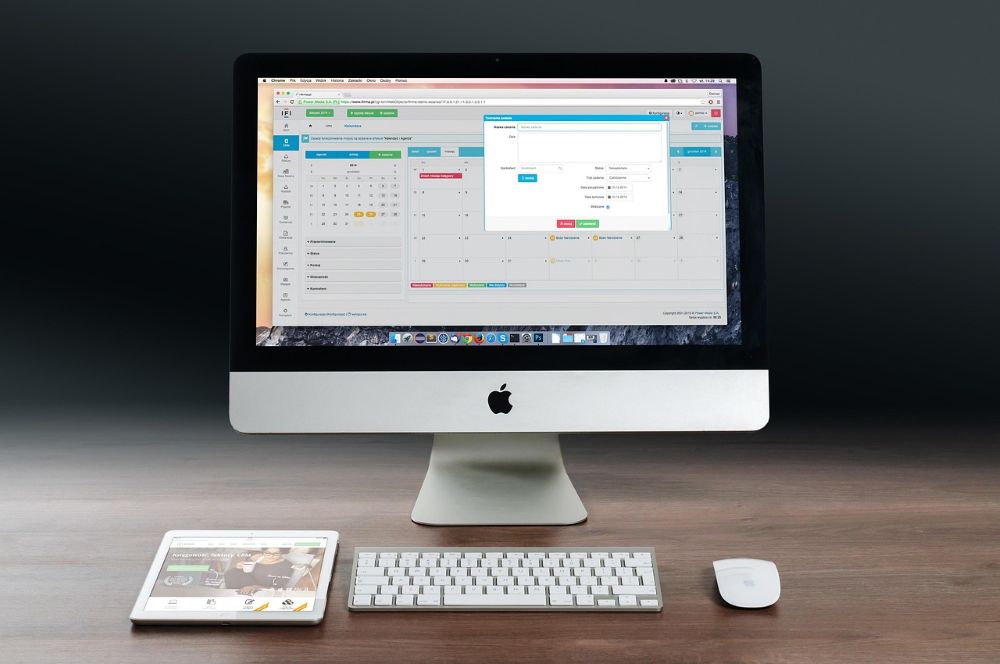IMAP vs. Local Folders:
The secret to your Outlook structure and why it matters
Have you ever wondered why Outlook sometimes displays different folder structures in the sidebar? Often, there’s a section for your email account and a separate section called “Outlook Data File” or “Archive.” Many users move emails between these sections without understanding the fundamental difference—a difference that affects data security, storage space, and remote access.
This article sheds light on this topic and clearly explains the difference between IMAP folders on the mail server and local folders on your computer. Understanding this concept is key to efficient and secure email management.

What is IMAP? Your window to the mail server
IMAP stands for Internet Message Access Protocol. It’s best thought of as a window to your mailbox that resides directly on your email provider’s server (GMX, Gmail, IONOS, etc.).
When you set up an email account with IMAP in Outlook, Outlook doesn’t primarily store emails on your computer. Instead, it constantly synchronizes with the server.
This means:
- When you read an email on your PC in Outlook, it’s also marked as “read” on the server. If you later check it on your smartphone, it will also be marked as read there.
- When you delete an email, it’s deleted on the server and disappears from all your devices.
- When you move an email to a subfolder (e.g., “Projects”), this folder is created on the server, and the email is moved there. The folder and its contents will appear on all your devices.
Advantages of IMAP: ✅ Cross-device access: Your emails are always identical on your PC, laptop, smartphone, and in webmail. ✅ Central storage location: If your computer breaks down, your emails are safely stored on the server. ✅ Easy setup: You don’t have to worry about backing up your emails (although your provider does).
Disadvantages of IMAP: ❌ Storage space limit: Your storage space is limited by your email provider’s limit. A full mailbox can prevent you from receiving new emails. ❌ Internet dependency: Without an internet connection, you can access already downloaded (cached) emails, but new actions (moving, deleting) cannot be fully synchronized with the server.
What are local folders in Outlook? Your digital archive on your PC.
Local folders are the exact opposite of IMAP. They exist only on the computer where they were created. In Outlook, these folders are stored in an Outlook data file, which you can recognize by the .pst file extension.
Think of a .pst file as a digital filing cabinet right next to your desk. Anything you place here has no connection to the mail server or other devices.
When you drag an email from one of your IMAP folders (e.g., your Inbox) to a local folder, the following happens:
- The email is deleted from the server.
- A copy is permanently stored on your hard drive in the .pst file.
Advantages of local folders: ✅ Frees up server storage: Ideal for archiving old emails to keep your IMAP mailbox lean and avoid exceeding storage limits. ✅ Full offline access: All emails in local folders are available at any time without an internet connection. ✅ Unlimited storage: Storage is limited only by the size of your hard drive. ✅ Control and ownership: You have sole control over this data file.
Disadvantages of local folders: ❌ No synchronization: Emails are only available on this one PC. You cannot access them from your smartphone. ❌ Your own backup responsibility: If your hard drive fails and you don’t have a backup of the .pst file, all emails archived within it are irretrievably lost! ❌ Performance risk: Very large .pst files (over 10-15 GB) can slow down or corrupt Outlook.
A direct comparison: IMAP vs. Local
| Characteristic | IMAP folder | Local folders (.pst file) |
|---|---|---|
| Storage location | On the provider’s mail server | On your PC’s hard drive |
| access | Of all connected devices | Only from this one PC |
| synchronization | ✅ Yes, in real time | ❌ No |
| Backup | Provider’s responsibility | Personal responsibility! |
| Storage space | Limited by the mailbox limit | Limited by your hard drive |
| Best use case | Daily work, active projects, everything that needs to be available on mobile devices. | Long-term archiving, completed projects, and reducing server load. |
The golden rule: Combine the best of both worlds.
The smartest strategy is not to choose one or the other, but to use both systems strategically:
Use IMAP for your active business: Keep all emails from the last 1-2 years in your IMAP folders. This way, you have access to relevant, current correspondence from anywhere.
Use local folders for archiving: Create a local .pst file (e.g., “Archive_2024.pst”). At the end of a year or after completing a large project, move all related emails from your IMAP folders to this file.
How to create a local archive file in Outlook:
- Go to “File” > “Open & Export” > “Open/Create Outlook Data File”.
- Select “Outlook Data File (.pst)” and click “OK”.
- Choose a location (e.g., your “Documents” folder) and enter a descriptive name such as Email Archive.pst.
- A new section with the name you assigned will now appear in the left-hand folder pane of Outlook. You can create new folders here by right-clicking and dragging and dropping emails into them.
Conclusion
IMAP and local folders are not competitors, but rather a team. IMAP ensures flexibility and synchronization in everyday use, while local folders are responsible for organization, efficiency, and secure long-term archiving. By internalizing this difference and organizing your emails accordingly, you will not only have your mailbox limit under control, but also create a logical and secure structure for all your digital communication.
Beliebte Beiträge
Salary negotiation: 5 phrases that can get you up to 15% more
Want a 15% raise? A successful salary negotiation depends on preparation and the right words. We'll show you five phrases you need to use – from setting the anchor to responding to a "no." This is how you argue persuasively.
Die besten Live-Übersetzer-Earbuds im Check
Schluss mit Sprachbarrieren! Moderne Earbuds wie Google Pixel Buds & Timekettle übersetzen Gespräche live. Wir zeigen die besten Modelle, erklären die KI-Technik, nennen die Kosten und zeigen, wo die Technologie noch an ihre Grenzen stößt.
So sieht das wirklich perfekte Homeoffice-Setup für 2026 aus
Ihr Homeoffice ist veraltet? Steigern Sie 2026 Produktivität & Gesundheit. Unser Guide zeigt das perfekte Setup: von ergonomischen Stühlen und 4K-Webcams bis zu Mesh-WLAN und Kabelmanagement. So investieren Sie in Ihre Karriere.
Internet, Telefon & TV: Die besten Komplettpakete
Internet, TV & Telefon aus einer Hand? Wir vergleichen die Komplettpakete von Telekom, Vodafone, O2 & 1&1. Wer punktet bei Speed, TV-Komfort (MagentaTV vs. GigaTV) und Preis? So finden Sie das beste Triple-Play-Angebot für Ihre Adresse.
How we all turned Google into our monopolist
Google's monopoly is homegrown – created by us. We chose the superior search engine, "free" services like Gmail and Maps, and ignored the competition. In exchange for convenience, we gave away our data and created the monopolist ourselves.
Das HBO-Portfolio zerbricht: Was Sky-Kunden 2026 verlieren
Sky & WOW verlieren 2026 die exklusiven HBO-Rechte, da HBO Max in Deutschland startet. Neue Top-Serien wie die "Harry Potter"-Serie laufen künftig exklusiv bei Max. Überraschend: Laufende Hits wie "House of the Dragon" bleiben Sky-Kunden erhalten. Alle Details zur neuen Streaming-Lage.

































